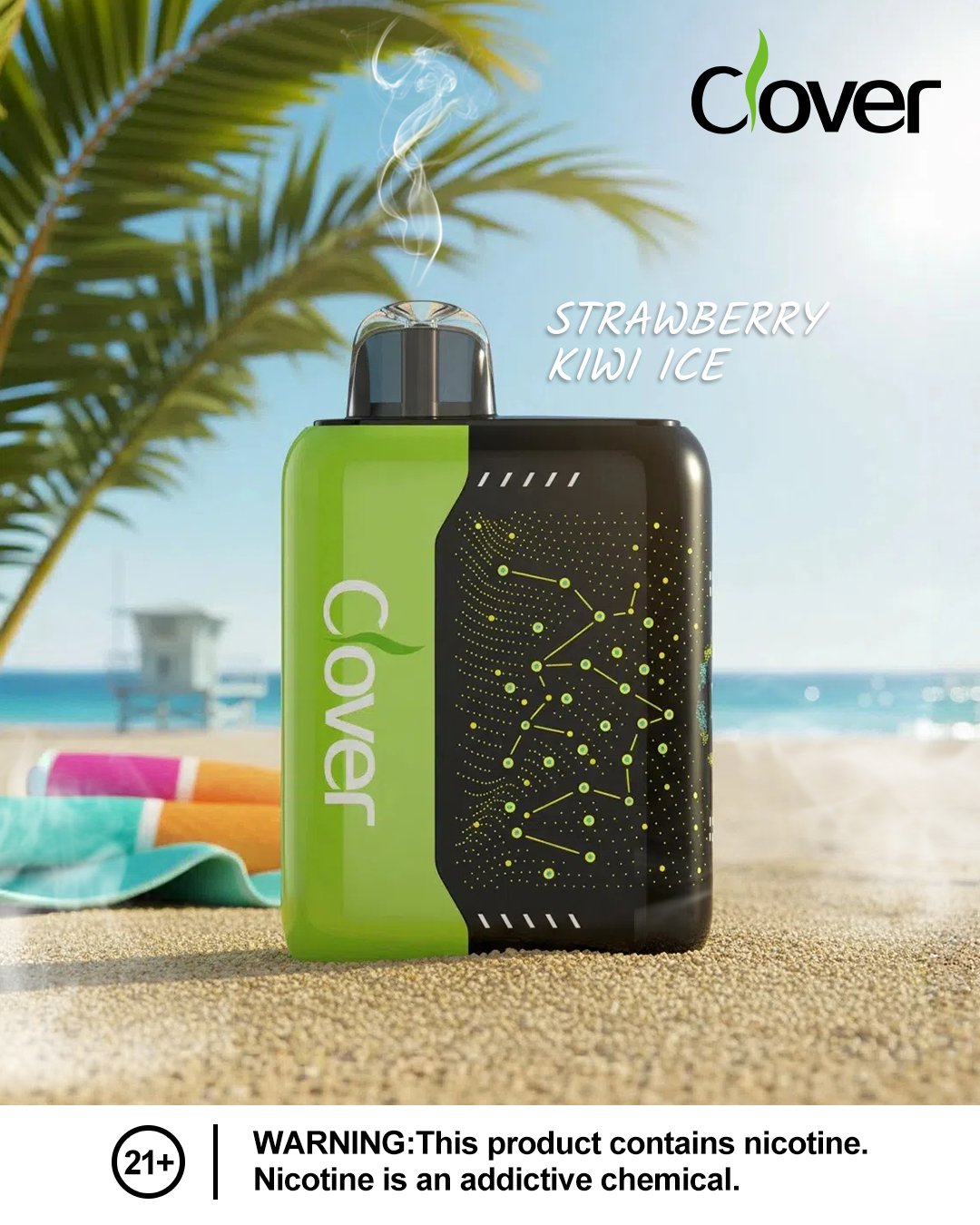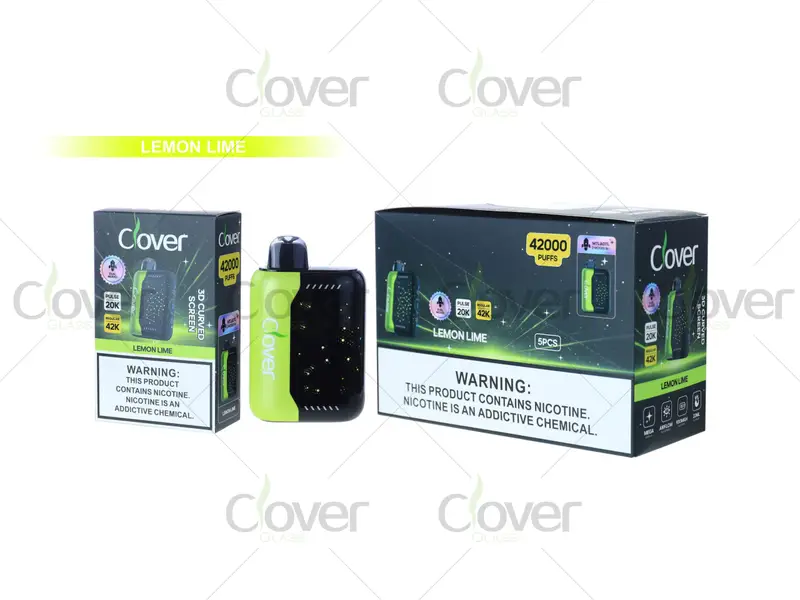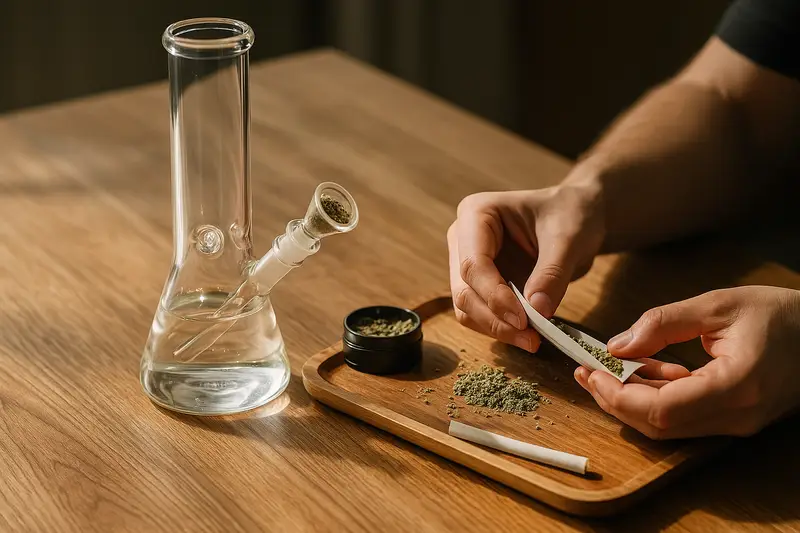I’ve spent countless hours experimenting with different smoking pipes, chatting with customers, and taking notes on every subtle preference. Over time, I realized something: choosing the best weed pipe can be surprisingly tricky, especially if you’re running a smoke shop or dispensary.
When folks ask me, “Which pipe should I stock?” I tell them: It’s not just about appearances—it’s about durability, comfort, and that sense of satisfaction a customer gets from a smooth hit. Below, I’ll reveal what I’ve learned, so you can make better decisions for your own retail shelves.
We’ll dive into types, materials, and special features that people love. Let’s get started!
The best way to choose a weed pipe for your store is to focus on what resonates with your customers. Consider common preferences like glass durability, silicone’s flexibility, or metal’s ruggedness. Next, match pipe sizes and joint types with your existing inventory and prioritize features (like ease of cleaning) that drive quick sales. Finally, find a reliable wholesale partner who offers consistent quality, fair pricing, and solid after-sales support.
So let’s dig deeper, step by step, into the world of weed pipes.
What Are the Different Types of Weed Pipes Available for Retail?
Each customer walks into a shop with unique preferences—some want a tiny pipe that slips into a back pocket, while others crave a showpiece. Let’s explore the most common types.
The main varieties include spoon pipes (classic handheld style), chillums (simple, straight tubes), bubblers (mini water pipes), and one-hitters (discreet single-load pieces). Spoon pipes are popular for their simplicity and ease of cleaning. Bubblers bring water filtration for smoother hits. One-hitters cater to on-the-go consumers. By understanding each style’s purpose, you can cater to more customers.

When I first began selecting pipes for my own product line, I found that spoon pipes were a no-brainer. They’re straightforward, often made of borosilicate glass, and come in countless colors and shapes. Customers appreciate how easy they are to handle and store. Meanwhile, chillums might look unassuming, but they’re beloved by folks who value simplicity and portability. If you’re running a smoke shop in a bustling city, you’d be surprised how many people want a quick, discreet option to slip into a jacket pocket.
Bubblers are basically a bridge between a typical pipe and a water bong. They offer water filtration, which cools and smooths the smoke. Many connoisseurs prefer bubblers for a more refined experience, but note that they need a little extra care during cleaning. One-hitters are an easy favorite for beginners or for those who want to microdose or quickly test new strains. They don’t take up much space, and they’re pretty simple to maintain.
Understanding Local Preferences
One extra tip: pay attention to local trends and regulations. Some regions have stricter rules about what can be sold. Plus, popular culture can shift demand quickly. If a certain type of pipe appears in movies or social media, you might see a surge in requests almost overnight.
Balancing Variety
Although variety is good, it’s crucial to avoid overwhelming buyers. Start by stocking an assortment of each pipe style, and then listen closely to what customers ask for. Over time, you’ll see which pipes move off the shelves fastest.
If you’re buying in bulk, remember the packing process—especially for glass. My brand, CLoverGlass, ensures every piece is carefully wrapped to survive shipping without damage. We also use annealing (materials science) processes to reduce stress in the glass, which helps prevent unexpected cracks. From spoon pipes to fancy bubblers, we’ve found that each category has its die-hard fans.
Glass, Silicone, or Metal – Which Material Is Best for Your Customers?
Choosing the right material is like picking the right car model for a road trip. You need reliability, plus a dash of style.
Glass remains the top choice for flavor purity. Silicone is flexible, nearly unbreakable, and perfect for travelers or clumsy friends. Metal pipes often boast sturdiness, but may slightly alter taste. The best approach? Offer a range. Glass for the enthusiasts, silicone for the rugged user, and metal for the ultra-durable crowd.

Glass pipes are a classic for a reason. Their transparent nature showcases the smoke, while the taste remains crisp and clean. Customers who appreciate craftsmanship love glass because it can be artful, with unique color blends and designs. Plus, glass can be easily paired with add-ons—like ash catchers or different joint sizes—if the piece is designed for them. My own brand, CLoverGlass, uses robust borosilicate glass to ensure longevity. And since I have an overseas warehouse in Los Angeles, it’s easy for me to restock shops quickly while keeping shipping costs low.
Silicone pipes, on the other hand, have soared in popularity due to their durability and flexibility. Imagine dropping one of these on concrete—no crack, no problem. For smoke shop owners catering to adventurous or outdoorsy customers, silicone might be the ticket. They’re also straightforward to wash, often being dishwasher-safe. However, some purists argue that silicone can slightly affect the flavor over time, so be mindful when recommending them to connoisseurs.
Metal pipes—usually aluminum or steel—are like the friend who’s always ready for anything. They’re sturdy, handle a few bumps and bruises, and typically disassemble for deeper cleaning. However, the metal can get hot to the touch if used for prolonged sessions, and occasionally the metallic taste seeps in. If your shoppers are often on-the-go or need something that can handle heavy wear, metal is a solid choice.
Matching Materials to Customers
In a well-rounded store, it’s wise to have a bit of each. If you specialize in premium experiences, invest more in high-end glass. For traveling enthusiasts, stock enough silicone to cover any demand. And for no-nonsense minimalists, keep a small range of metal pipes on hand.
Personalizing the Selection
Keep in mind, it’s not just about materials. Colors, shapes, logos, and packaging matter. I always provide free professional high-definition product images to my wholesale customers, so they can market our pipes online. By showcasing the best angles and highlighting key features, you’ll capture the attention of both casual buyers and true aficionados.
How to Match Pipe Sizes and Joint Types with Your Existing Inventory
You can have the best pipes, but if they don’t match your existing bongs, bowls, or dab rigs, you might end up with unsold stock.
First, check the joint type—commonly 14mm or 19mm (also called 18.8mm). Ensure you have compatible bowls or accessories that fit snugly. Next, measure average pipe length or chamber size to align with your store’s typical buyer preference. It’s about synergy: matching sizes and joint types boosts cross-selling and customer loyalty.
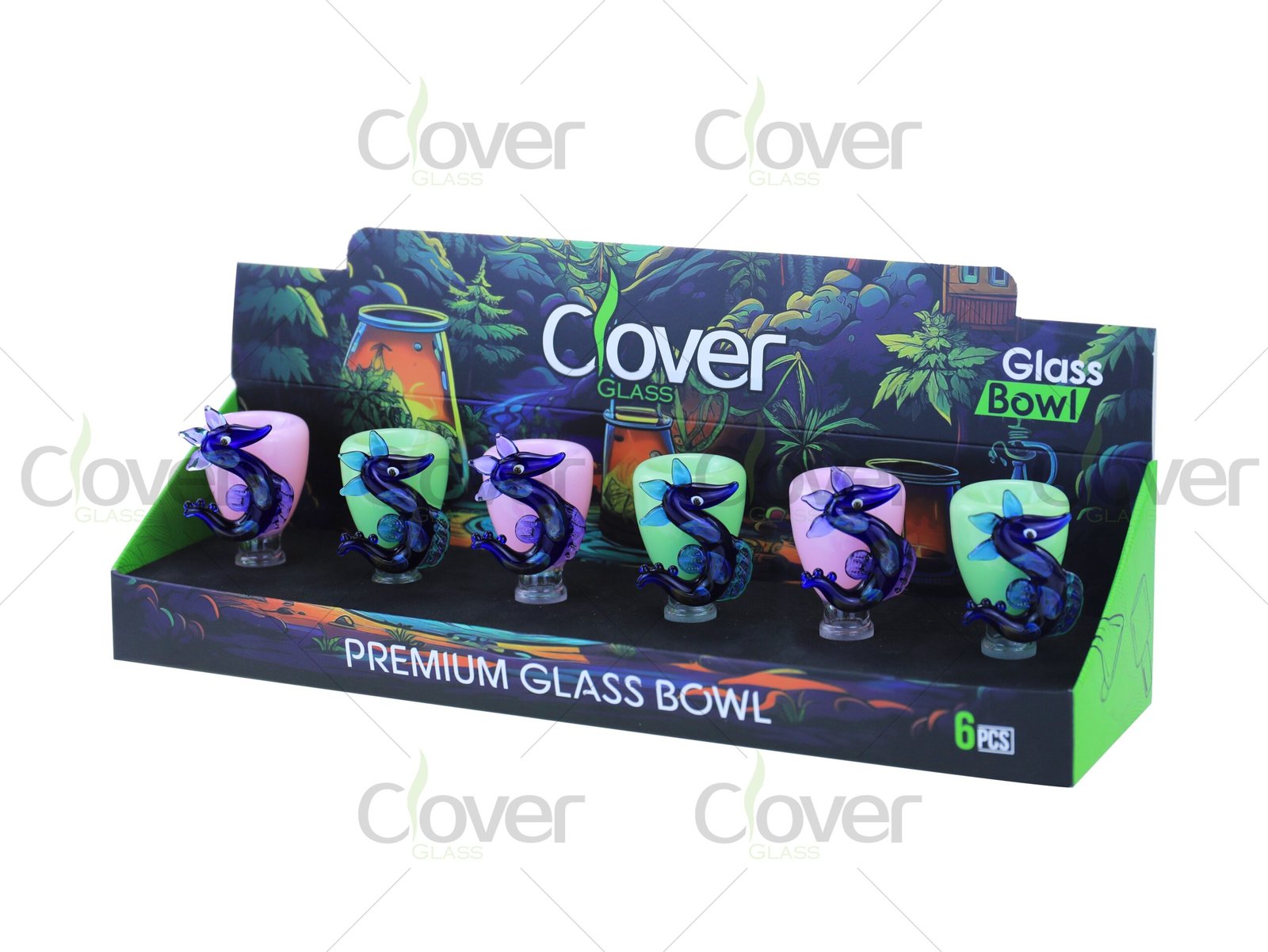
If you’re anything like me, you’ve seen customers excitedly buy a new pipe only to come back frustrated, saying, “My existing bowl doesn’t fit!” This annoyance can be avoided by ensuring your displayed pipes either come with a matching bowl or are clearly labeled with their joint type. A fulfillment center approach might work well here: grouping pipes, bowls, and accessories together for quick identification and shipping.
Common Joint Sizes
Most glass pieces revolve around 14mm or 19mm joints, though some specialized rigs use 10mm. The bigger joints tend to allow more airflow. Be mindful of local trends—some states love the standard 14mm, while others heavily prefer 19mm. It might be wise to carry both, especially if you’re shipping nationwide.
Considering Pipe Length and Chamber Size
Small pipes are easier to store and transport. Longer pipes can deliver cooler hits but may be more fragile. Striking a balance is the key to ensuring you don’t get stuck with inventory that rarely moves. One strategy is to keep a smaller quantity of large specialty pipes for connoisseurs while maintaining a healthy supply of mid-sized pipes that appeal to most folks.
| Pipe Feature | Buyer Benefit |
|---|---|
| 14mm Joint | Easier to find matching bowls |
| 19mm Joint | Provides improved airflow |
| Small Chamber | Simple travel, quick hits |
| Large Chamber | Cooler draw, bigger clouds |
Building a Cohesive Collection
At CLoverGlass, we often help our retailers by curating packages that include pipes and matching accessories. It streamlines the buying experience. If your shop already stocks a variety of bowls and downstems, consider focusing on pipes that are sure fits. This saves time explaining compatibility to each customer, and everyone leaves happy.
Top Features That Make a Weed Pipe Sell Fast in Smoke Shops
Ever wonder why some pipes practically fly off the shelf while others gather dust in the corner?
The secret lies in standout features: eye-catching design, easy cleaning, comfort in hand, and reliable functionality. A pipe with a distinct look (like colored accents or custom artwork) gets noticed. If it’s also simple to maintain and delivers smooth hits, it’s a winner. Keep these in mind to maximize sales.
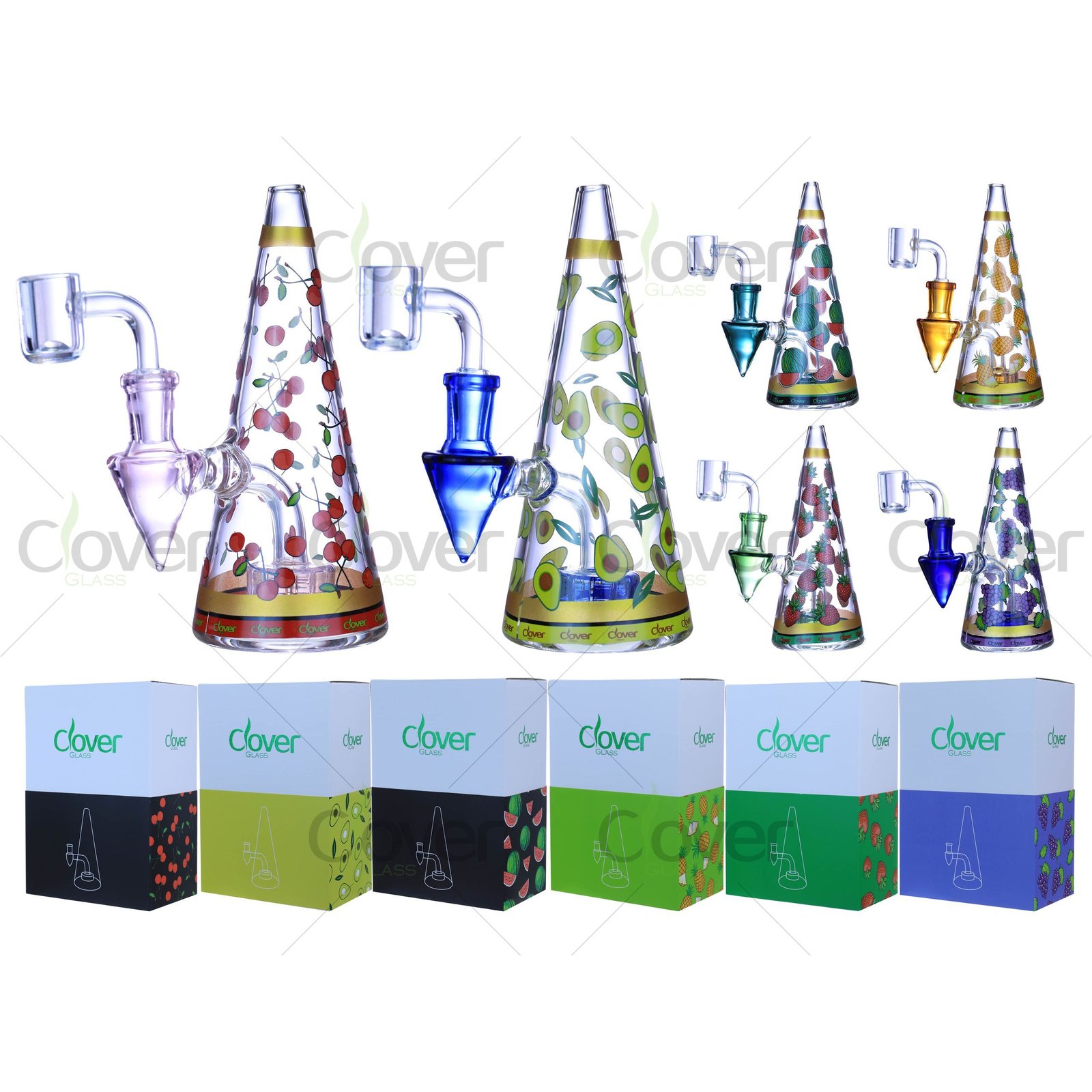
When I first started selling pipes wholesale, I noticed that customers gravitate toward designs that reflect a personal style or vibe. Whether it’s a sleek minimalist pipe or one splashed with cosmic patterns, standing out is half the battle. But design alone won’t seal the deal—functionality matters just as much.
Comfort and Ergonomics
If a pipe feels awkward to hold or too heavy, it’ll probably end up in the back of a drawer. Customers love something that fits naturally in the hand. I often get feedback that a slight curve or a well-placed carb hole can make a world of difference. When you’re placing a wholesale order, it’s worth testing a few models yourself. Hold them. Imagine a quick toke. Does it feel right?
Quality and Durability
If you’re investing in glass, check for thickness and clarity. A cheap, thin pipe might break easily, leaving customers unhappy. My brand uses a professional approach to packaging—each product is individually wrapped and labeled, minimizing breakage during transit. We also have a professional after-sales support system. If something does break, just send us a photo, and we provide compensation or credit to keep you secure.
Easy Cleaning
People often ask, “How do I clean this thing?” If the answer is complicated or time-consuming, some will pass. Removable parts or wide openings simplify scrubbing or soaking in isopropyl alcohol. For silicone pipes, users can just toss them in hot water or even a dishwasher—major bonus points.
Eye-Catching Artwork
We work with many skilled glassblowers who’ve been in the industry for over a decade. They love creating mesmerizing swirls, color fades, or vivid marbles. These details can make a pipe practically jump off the shelf. Best of all, if you’re looking for custom designs, we can handle OEM orders. I’ve seen shops brand their pipes with unique logos or slogans, which helps build store identity and encourages repeat customers.
What to Consider When Buying Weed Pipes in Bulk for Your Store
Buying in bulk can be a blessing or a curse. Get it right, and you save money and keep shelves stocked. Get it wrong, and you’re stuck with a pile of slow-moving items.
Key factors include pricing, minimum order quantities, shipping logistics, and reliable customs clearance support. Look for a supplier who offers not only competitive costs but also quality checks, secure packaging, and after-sales service. Remember to consider special deals or promotions for large orders—it can be a game-changer for your bottom line.
In my experience, buying weed pipes in bulk requires balancing price, quality, and demand predictions. A common mistake is stocking up on a style that isn’t popular. To avoid that, do a test run. Order a smaller quantity first, gauge customer feedback, and then scale up.
Pricing and MOQ
Many suppliers require minimum order quantities. We’ve set ours at 20 boxes for shipping efficiency—this ensures minimal breakage in transit and streamlined handling. If you’re exploring production orders or OEM, the typical quantity per style might jump to 100 pieces, but each situation differs. Don’t hesitate to negotiate or communicate with your sales rep.
Shipping and Delivery Time
Sea freight is a popular choice for cost efficiency, although it may take a few weeks. My advantage is having a warehouse in Los Angeles, so I can quickly ship inventory that’s already stateside. This cuts down transit time significantly. After you confirm payment, you can arrange a trucking company to pick up the goods, or we’ll handle delivery to your warehouse.
After-Sales Support
Let’s be honest: glass can break, orders can get delayed, and customers can change their minds. A professional after-sales team is crucial. With a good partner, if something goes wrong—like lost goods or detained shipments—you’ll have a remedy or compensation in place. My policy is straightforward: if any piece arrives broken, show me a photo, and I’ll give you a credit. That kind of reliability goes a long way.
Warehouse Storage and Inventory Management
If you’re ordering thousands of pipes, think about where you’ll store them. Is your shop big enough, or do you need an external warehouse? We keep a substantial inventory in our L.A. facility, helping retailers avoid the headache of large on-site storage. Some store owners also prefer drip-feeding their orders, so they aren’t overwhelmed with product all at once.
Where to Find Reliable Wholesale Suppliers for High-Quality Smoking Pipes
Choosing the right supplier can feel like wading through a maze. So, how do you find that golden needle in a haystack?
Start by checking reputable online directories, trade shows, or industry forums. Investigate a supplier’s reputation, product range, and shipping reliability. Look for proven track records, clear communication, and solid after-sales service. Remember: A good supplier is more than just a one-time deal; it’s a long-term partner for your business growth.

I’ve been in the tobacco and smoking accessories world for over a decade, and I’ve learned that reliability often trumps flashy marketing. A supplier might boast about “amazing deals,” but if they can’t ship on time or consistently deliver high-quality items, you’ll be left to clean up the mess. That’s where building a trusting relationship makes all the difference.
Trade Shows and Word of Mouth
One of the best ways to identify solid suppliers is through trade shows like CHAMPS or ASD. I attend these in the U.S. every year and always walk away with fresh industry insights. You get to see products firsthand, talk face-to-face, and gauge a company’s vibe. Also, industry forums and social media groups can be treasure troves of peer reviews. Keep your ears open for both good and bad feedback on potential suppliers.
Checking a Supplier’s Portfolio
A reliable supplier typically offers a broad range—spoon pipes, bubblers, recyclers, dab rigs, grinders, and more. If they consistently produce quality across categories, that’s a good sign. In my case, my company has over 10,000 styles and a monthly output of new products. We’re always keeping an eye on trends and updating our offerings accordingly.
Shipping and Customs Support
U.S. customs can be strict about tobacco and glass-related imports. Look for suppliers who have a proven system to handle customs clearance without complications. I’ve assembled a professional clearance team, ensuring the goods pass customs smoothly. Whether it’s 20-foot equivalent unit containers or palletized shipments, the process should be clear and predictable.
Communication is Key
Above all, communication can make or break the partnership. If your supplier is slow to respond or evasive about details like packaging, materials, or shipping timelines, it’s a red flag. Seek out businesses that are straightforward—ones that will offer to send you high-resolution images, thorough product specs, and keep you informed at every step. That’s what fosters a lasting collaboration.
Conclusion
Selecting the right weed pipes for your smoke shop or dispensary is all about understanding what your customers want, pairing that with reliable suppliers, and keeping quality in focus. With the right mix of materials, designs, and trustworthy partners, you’ll keep those shelves turning over in no time.

